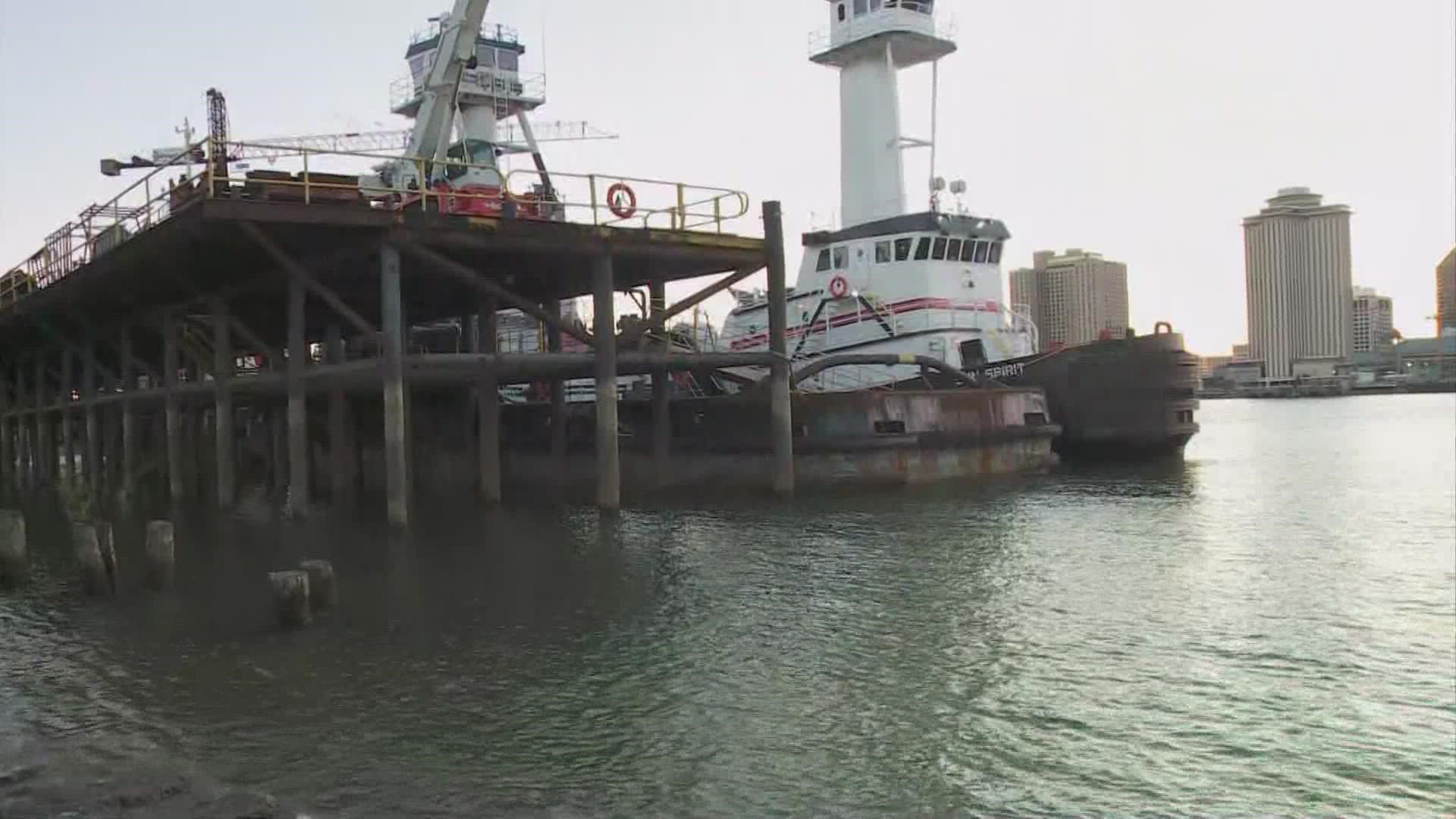MISSISSIPPI, USA — Locals are used to seeing the Mississippi River fluctuate. But right now, it's noticeably lower than usual for this time of year.
"I have to check the river every day to make sure it's still here," joked Leslee Reed, who often walks by the river uptown.
The low river levels are due to a drought affecting much of the country. 41% of the U.S. drains into the Mississippi River, which means low rain totals as far north as Illinois can impact the level of the river in Louisiana.
The effects are visible across the city. At Audubon Riverview Park, commonly known as The Fly, visitors can see a wide stretch of weeds and trees alongside the river that are not normally visible.
At Algiers Point, a strip of sandy beach lines the river next to the ferry terminal. Annette Watt, who walks her dog on the levee every day, gestured to the stretch of sand. "You can't usually see it here at all."
Despite how the river looks in New Orleans, it probably will not make it into the history books this season.
Julie Lesko, a Senior Service Hydrologist with the National Weather Service, explained that the river "still has a ways to go" before it hits the record low set in 1988.
In Baton Rouge, though, it's close. And even farther north, in Memphis, the Mississippi river is now at its lowest level in recorded history.
This has caused delays and cancellations for some river cruises that go to and from New Orleans. The river is still navigable here, but some ships are currently docked at ports farther upriver, where the water level is lower.
The Port of New Orleans says it is also "starting to see some barge availability in our region be impacted" by the low river levels farther north. So far, no ocean cruises that leave New Orleans have been impacted.
And the low water level does not rattle those used to the river's ever-shifting banks. "In the winter I expect it to be fairly low," Reed said.
As of now, the National Weather Service predicts the Mississippi River will keep dropping in Southeast Louisiana over the next month.

